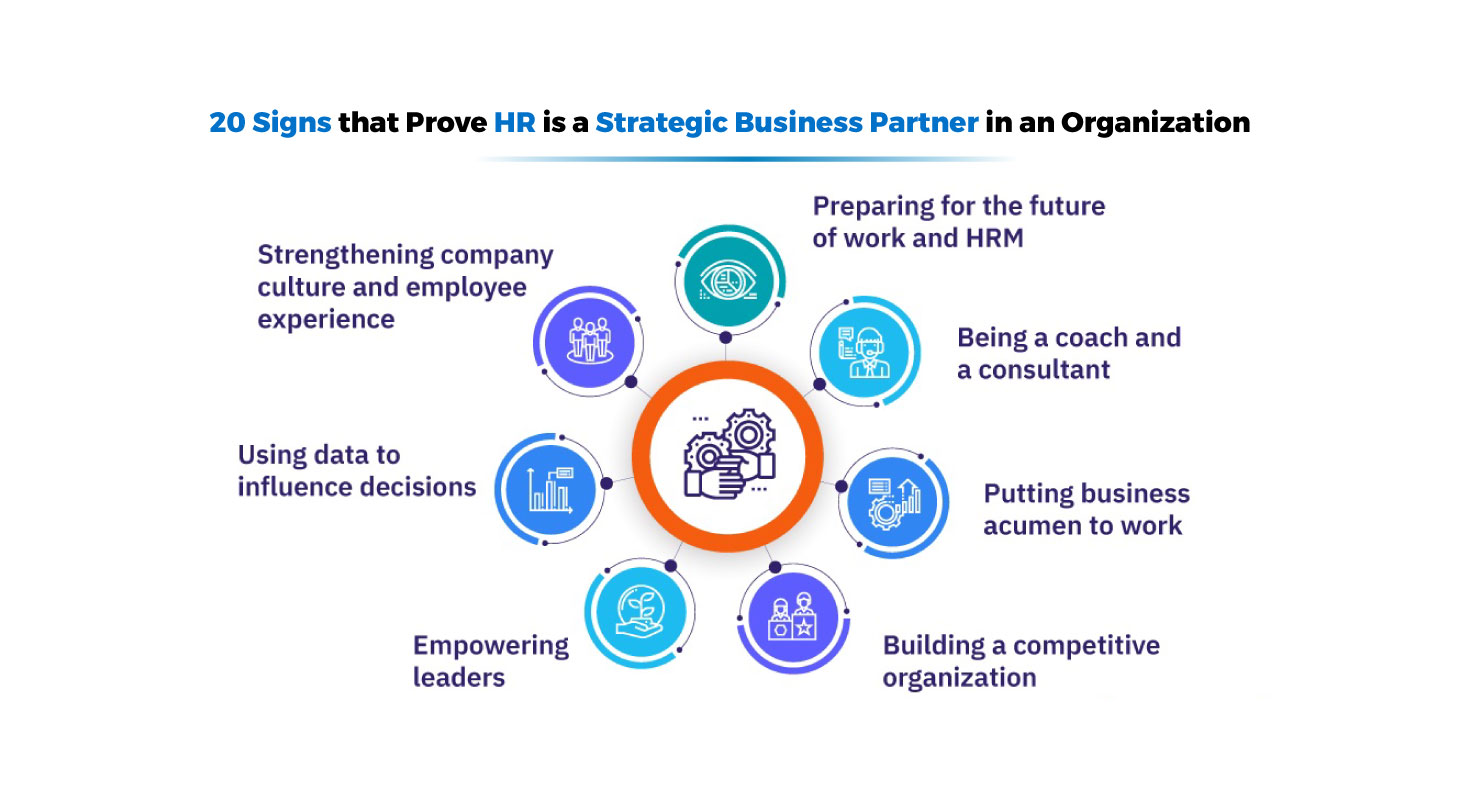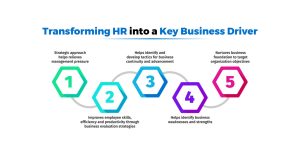Book Appointment Now

20 Signs that Prove HR is a Strategic Business Partner in an Organization
HR as a strategic business partner drives organizational success by aligning talent strategy with business goals, using data-driven decisions, enhancing engagement, fostering learning, leading digital transformation, supporting change, and ensuring compliance. Through collaboration and proactive initiatives, HR directly impacts productivity, retention, and overall business performance.
- HR is Part of Executive Meetings
HR has a seat at the executive table, actively participating in strategy discussions and decision-making processes, ensuring the alignment of people strategy with business goals. - Talent Strategy Mirrors Business Objectives
The talent acquisition and development plans are tailored to meet the company’s specific growth targets, such as expansion into new markets or product launches. - Data-Driven HR Decisions
HR leverages analytics to drive decisions, using data to inform recruitment, retention, and engagement strategies, and to measure the impact of HR initiatives on business outcomes. - Employer Branding is Strategic
HR collaborates with marketing to build a strong employer brand that attracts top talent and aligns with the company’s image in the marketplace, reflecting the organization’s core values. - Proactive Workforce Planning
HR conducts regular workforce planning sessions, forecasting talent needs based on business projections to ensure the organization has the right talent at the right time. - HR Advocates for Diversity and Inclusion
By promoting diversity and inclusion, HR enhances team creativity, decision-making, and adaptability, aligning workforce demographics with a diverse customer base. - Focus on Employee Engagement
HR actively measures and boosts engagement through regular surveys and feedback channels, creating a positive work environment that drives productivity and retention. - Investment in Learning and Development
HR develops robust training programs that address both current and future skill requirements, preparing employees to adapt to industry shifts and supporting innovation. - HR Manages Digital Transformation Initiatives
HR leads the adoption of digital tools and platforms, automating processes and improving data accuracy while providing insights that enhance workforce management. - Support for Organizational Change
HR plays a central role in change management efforts, ensuring smooth transitions during restructuring, mergers, or other significant changes by communicating effectively and managing employee concerns. - Clear Performance Management Practices
HR establishes performance management systems that set clear expectations, provide regular feedback, and reward high performance, aligning employee goals with business objectives. - Strategic Role in Succession Planning
HR identifies and develops future leaders, ensuring continuity in key roles to support long-term business success, minimizing disruptions when leadership changes occur. - Cultural Alignment with Business Goals
HR drives initiatives that reinforce a culture aligned with the organization’s vision and values, ensuring employees understand and contribute to the business mission. - Metrics-Driven Approach
Key performance indicators (KPIs) for HR activities are tied to business outcomes, allowing HR to measure and demonstrate its impact on productivity, revenue, and employee satisfaction. - Flexibility and Adaptability
HR promotes a culture of adaptability, enabling the organization to pivot quickly in response to market changes or disruptions, and encourages continuous learning and innovation. - Enhanced Employee Value Proposition (EVP)
HR designs an EVP that makes the organization attractive to current and potential employees, supporting recruitment and retention efforts by aligning with what employees value most. - Use of Advanced Technology for Talent Management
HR integrates HRIS, applicant tracking systems, and learning management systems, streamlining talent processes and improving employee experience across the organization. - Effective Talent Retention Strategies
Through retention strategies, HR proactively addresses turnover by fostering career growth, recognition, and engagement, which contributes to the organization’s stability and success. - HR Drives Compliance and Ethical Standards
HR ensures that the organization operates within legal and ethical guidelines, protecting the company’s reputation and reducing risks associated with non-compliance. - Collaboration Across Functions
HR collaborates closely with other departments, integrating people strategies with operational needs and establishing itself as a core partner in achieving the organization’s goals.
These signs show that HR is no longer just a support function but a proactive, strategic business partner, essential to driving growth and achieving business objectives.

